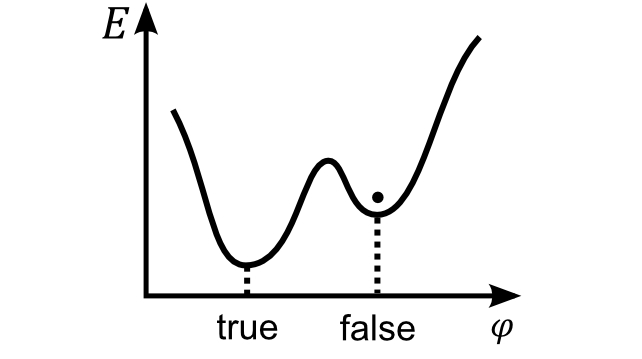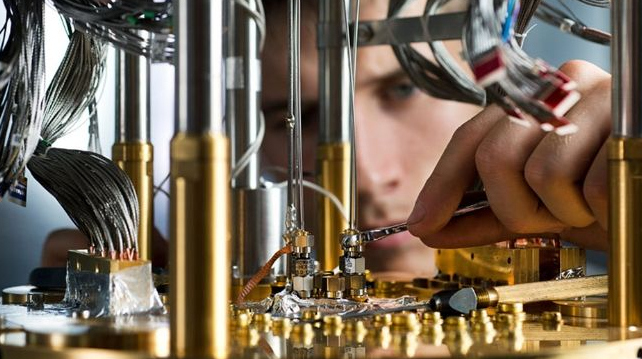Our entire reality could – in theory – be built on a bed of sand, teetering on the brink of collapse. If so, a new device developed by a collaboration of physicists in Europe might give us some idea of how it all ends.
Using a process known as quantum annealing, the researchers have provided a proof-of-concept method to study the dynamics of a terrifying kind of reality-decay that would pull at the threads of physics, causing them to unravel.
Were such an event to occur somewhere in the cosmos, the quantum laws that lend structure to matter would be rewritten at the speed of light, spelling an end to all reality as we know it.
How likely is this existential exit? Somewhere on the spectrum from impossible to putting a question mark around next Tuesday's dental appointment.
"We are trying to develop systems where we can carry out simple experiments to study these sorts of things," says Zlatko Papic, a theoretical physicist at the University of Leeds in the UK and lead author of a study aiming to provide a new way to study quantum fluctuation.
"The time scales for these processes happening in the Universe are huge, but using the annealer allows us to observe them in real time, so we can actually see what's happening."
Late last century, American theoretical physicists Sidney Coleman and Frank De Luccia grimly pointed out that there is no reason to think the lowest energy state of absolute nothingness really is the lowest. In other words, we're all standing on a false floor above an abyss of pure chaos.
Wink out every star, lock away every atom, and wipe the cosmos clean, you're still left with a nothingness that seethes with particles buying and selling their way towards existence. All of physics emerges from this economy of exchange, in fact, facilitating nuclear and chemical reactions in a relatively stable stock market of energy bartering.
Coleman and De Luccia invited us to imagine that what we think of as the lowest level of the Universe's economy hides a deeper kind of broke. What might happen if somewhere, somewhen, one bubble of space was to lose its fortune at the roulette table, and then some?

The consequences could, in fact, be catastrophic. A ripple-effect could roll out at light-speed as the new value of nothingness brought the whole cosmic financial system crashing down.
"We're talking about a process by which the Universe would completely change its structure," says Papic.
"The fundamental constants could instantaneously change and the world as we know it would collapse like a house of cards. What we really need are controlled experiments to observe this process and determine its time scales."
Controlled experiments to test a hypothetical black market for the Universe's energy economy aren't exactly the easiest things to design, but Papic and his team may have found a way to at least mimic the pockets of economic collapse using quantum annealing.

The concept relies on using the fluctuating fuzziness in quantum mechanics to find an optimal solution among a range of likely states. Their system used thousands of superconducting units operating as units in a quantum computer, representing a simplified single-dimensional map of empty space churning with possibility.
In the study, the team's simulation of false vacuum decay supported models that predict the size of a collapsing bubble is in fact the result of a competition between the energy gained by the sudden drop inside it and the loss of energy from the bubble's surface.
In the event multiple bubbles form, a complex dance of interactions emerges where smaller ones can affect the expansion of larger ones.
None of this actually tells us whether a false vacuum exists, or – if it does – whether we can expect our favorite reality show to be cancelled within the next few quadrillion years.
But every experiment takes us a step forward to understanding these complex ideas, and the quantum annealing method could one day be used to test predictions on the birth of universes like our own.
"This exciting work, which merges cutting-edge quantum simulation with deep theoretical physics, shows how close we are to solving some of the Universe's biggest mysteries," says Papic.
This research was published in Nature Physics.
